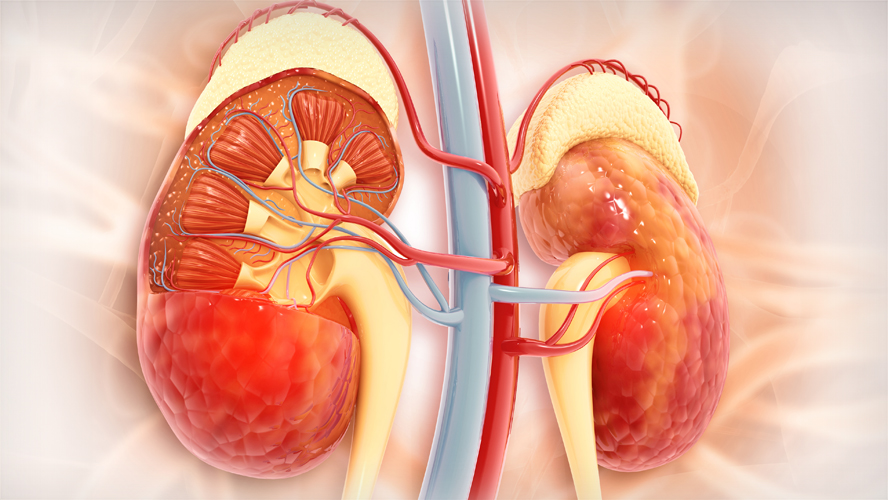
By UHN Research Communications
Researchers at UHN’s Toronto General Hospital Research Institute (TGHRI) explored differences in male and female kidney cell metabolism, uncovering the mechanisms associated with sex-related outcomes in diabetic kidney disease.
Chronic kidney disease affects more than 14 percent of the world’s population and is commonly caused by diabetes.
Previous research has shown that males are at higher risk of diabetic kidney disease development and disease progression compared to females. Still, some females with diabetes also develop diabetic kidney disease.
However, the underlying reasons behind these sex-related differences are poorly understood and understudied.
Recent studies have emphasized the role of kidney tubular cells in the progression of diabetic kidney disease. Tubular cells are the primary cells responsible for producing energy in the kidney.
They convert nutrients into energy through a process known as metabolism, producing essential molecules called metabolites. The metabolic activities of tubular cells are critical for kidney health and disease.
Dr. Ana Konvalinka, TGHRI Senior Scientist and senior author of the study, led an international team of researchers to explore metabolic differences in male and female tubular kidney cells.
Studying human tubular kidney cells, researchers found that male tubular cells had larger mitochondria – cell structures critical for generation of energy – and increased mitochondrial function. This heightened activity was due to more nutrients targeting a mitochondrial pathway known as the tricarboxylic acid (TCA) cycle.
The TCA cycle is a fundamental pathway for generating energy for cells, but excessive activity can have detrimental effects. This was seen in the male cells, as they also showed increased rates of cell death, inflammation and loss of mitochondria.
These distinct metabolic features were further enhanced in the presence of male sex hormones. Analyzing gene expression data sets of human kidneys, researchers discovered two transcription factors that interact with sex hormones or chromosomes to mediate metabolism in male kidney cells, particularly when exposed to high glucose to mimic diabetic conditions.

These transcription factors present promising targets for developing therapeutic intervention.
Researchers also identified a potential protective factor in kidney cells – pyruvate. This metabolite is increased in female tubular cells and may act as an antioxidant to mitigate oxidative stress and subsequent cell damage in diabetic kidney disease.
“Sex-specific strategies that favour pyruvate accumulation while preventing excessive TCA cycle metabolism should be investigated as potential ways to prevent or improve the development of diabetic kidney disease,” says Dr. Sergi Clotet-Freixas, a previous postdoctoral researcher in the lab of Dr. Konvalinka and first author of the study.
Researchers further confirmed these results by analyzing more than 5,800 blood samples from diverse groups of individuals with or without diabetes and kidney disease.
In young males without diabetes, levels of TCA cycle metabolites were higher compared to females, suggesting increased mitochondrial activity. Elevated TCA metabolite levels were also found to be associated with the male sex, diabetes and overall mortality in adults with chronic kidney disease.
This suggests that these metabolites either have harmful effects on males with diabetes or are a result of harmful metabolic processes in their tissues.
In contrast, diabetic females without kidney disease had higher concentrations of pyruvate, better kidney function, and lower mortality.
“The power of teamwork is exemplified in this study, as we engaged collaborators from around the world who enthusiastically participated and shared samples and data from their research,” says Dr. Konvalinka, who is also an associate professor in the Department of Medicine, Division of Nephrology at the University of Toronto.
“What we have described is paradigm-shifting and suggests that mechanisms of kidney disease are distinct in males and females and require distinct solutions.”
Dr. Clotet-Freixas continues to investigate sex-specific therapeutic strategies to help patients with diabetes and diabetic kidney disease as a principal investigator at McMaster University – St. Joseph’s Healthcare Hamilton.
This study was supported by generous donors to UHN Foundation.

No one ever changed the world on their own but when the bright minds at UHN work together with donors we can redefine the world of health care together.


